The 3 types of WMS editors
WMS software
Logistics
October 17, 2024

WMS publishing companies a priori offer relatively similar products.
So how is this market organized? Which publishers for which types of needs and for which development prospects?
In order to see things more clearly, we have classified them into 3 main categories .
Expert editors
These are generally specialists present mainly in very specific sectors (process industries, pharmaceuticals , etc.) or in very specific logistics professions (cold logistics, e-commerce , etc.). These WMS publishing specialists often offer complete “verticals” (APS, ERP, TMS, OMS).
These publishers are regularly consulted by large groups, often with international locations, and who wish to overhaul their warehouse logistics by equipping themselves with a WMS. The projects are therefore complex with numerous logistical configurations.
These large groups also want to take advantage of the installation of a WMS to standardize , in a given sector of activity, their logistics practices in their different sites; in fact, change management in organizations is a crucial point.
Features:
Here we will find publishers with offices and representations in France and internationally, with very large teams of functional and technical consultants These publishers also rely on integrator partners to deploy their solutions around the world. The methodologies implemented are quite classic (known as V-shaped) and therefore the implementation times are relatively long . Managing interfaces between logistics, quality, sales or production teams then becomes a “project within a project”.
Given their experience and seniority in the profession, these large-scale publishers have good sectoral practices (benchmarks) which can contribute to more quickly “aligning” heterogeneous processes from one site to another in a new customer.
The functional coverage of their solution is generally important for a given business. However, these coverages do not prevent significant costs from being incurred in adaptation, subject to relatively detailed (even heavy) specifications, in order to address all of the sites' practices. As a result, there can be numerous back and forths with the client's functional teams (project manager, key users, end users, etc.).
The advantages:
- Functional coverage of the WMS,
- Specializations by sector of activity (concept of verticalized solutions),
- Simultaneous implementation of several sites in France and internationally,
- Robust businesses.
Points of vigilance:
- Little agility – restrictive V-shaped methodology,
- Daily rates charged,
- Low responsiveness in the event of unanticipated modification requests,
- Cost of specific developments.
Publishers of “light” inventory management solutions
Recently, new players have positioned themselves in this WMS segment and we have little perspective on their sustainability in this market.
Some of them have also abandoned their positioning as WMS publishers along the way, to reposition themselves on less complex solutions such as TMS or OMS.
Features:
These publishers offer relatively basic and inexpensive solutions, ideal for inventory management . Their solution is less, or even unsuitable, for managing logistics flows.
The specifications must therefore be particularly detailed to properly verify, before choosing them, the perfect adequacy of their solution with the needs expressed. If this is not the case, the specific developments, at best, will incur significant costs or development time, or at worst, will not be feasible due to a lack of sufficient technical or professional skills at this publisher.
It is therefore important for this category to measure the “benefit/risk” ratio .
The advantages:
- Cost of acquiring the solution,
- Easy to implement for inventory management,
- Ergonomics – quick handling,
- Ideal for logistics flows and basic business rules.
Points of vigilance:
- Functional covers to manage technical flows and performances,
- Ability to evolve and support the growth of the warehouse over time,
- Low seniority or financial strength,
- Small publishers.
General publishers
These publishers position themselves at the meeting point between the big and small players.
There are well-established publishing companies with numerous references. They are broken down between generalists present in numerous sectors of activity .
Features:
These publishers are often SMEs , based in France, with extensive experience in the logistics field. Their WMS thus covers a wide range of business functionalities , with extensive feedback in terms of interfacing with ERPs or end-of-line conveyors.
other advantage is their size which allows them great flexibility , flexibility and responsiveness in the implementation of a WMS . These companies have developed agile methodologies allowing implementations in record time. These implementations were made possible by the broad functional coverage and modularity of their solution (avoiding specific IT development costs).
The advantages:
- Flexibility of teams in implementation,
- Functional coverage,
- Internal business expertise and technical robustness of the solution,
- Ability to support over time.
Points of vigilance:
- SaaS mode not very present,
- International presence,
- Limited resources for large projects,
- Insufficiently documented implementation methodologies.
In conclusion, the WMS publisher market is a mature market and the offering is broad enough to meet your needs.
We can support and advise you in choosing the right technological solution based on your work environment and your issues. Our approach is resolutely results-oriented and serves the objective that we have in common : controlling your logistics flows.
Most read articles
WMS software
Logistics
Supply Chain
November 7, 2025
Go beyond the ABC method: How a WMS refines your inventory management strategy?
In logistics, the ABC method is a classic. But here's the hard truth: in the age of e-commerce, relying solely on a static ABC analysis is like trying to win a Formula 1 race without the right car. The problem isn't the method itself, but treating it as an immutable truth set in stone once a year.
WMS software
Logistics
Supply Chain
October 31, 2025
Packaging optimization: How does your WMS save you money on transported "empty space"?
Empty space represents, on average, 57% of the volume of packages shipped in e-commerce. It's not just wasted space; it's money gone up in smoke. In this article, we'll analyze how a WMS platform can become the ultimate weapon against empty space.
WMS software
Logistics
Supply Chain
July 3, 2024
Inventory management using WMS software
To master your inventory management, it is imperative to use suitable and efficient inventory management software. With this automation, you can monitor the status of your inventory in real time, allowing you to make informed and rapid decisions to avoid stock-outs or overstocks.

















